Promoting cross-culture collaboration and innovation in the fields of technology and engineering, Nagaoka University of Technology offers a solid educational framework that has allowed its Japanese alumni to succeed overseas, while many of its international graduates go on to build successful careers and lives in Japan.
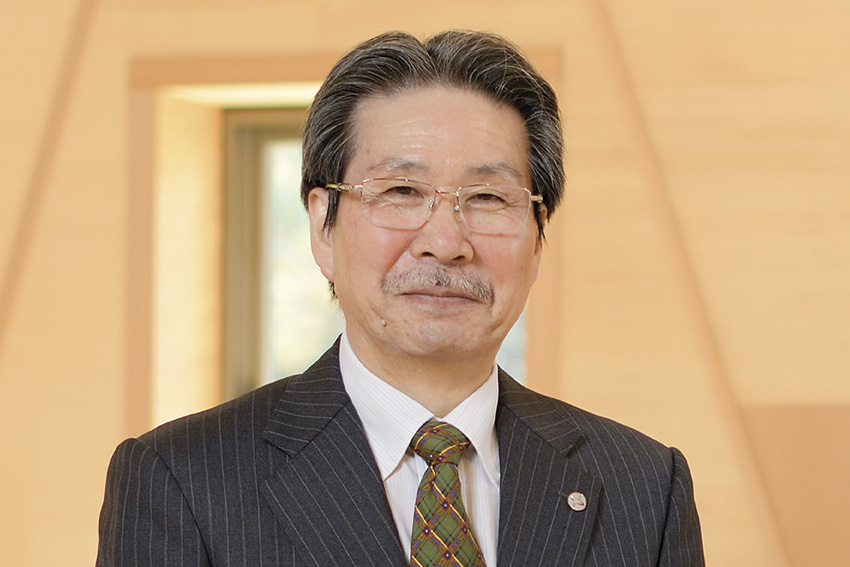
Nagaoka University of Technology
Today Japan faces a series of challenges. On top of a lack of labor force relative to other countries, the nation’s demographic is anticipated to cause a shortfall of 11 million workers by 2040. To address the situation the government has decided to revamp its education system with ambitious targets of attracting 400,000 foreign students to Japan. What role do you believe universities play in addressing Japan’s challenges including this need to globalize and the shortage of labor?
For universities like ours, it is important to welcome students from many diverse backgrounds, and this is mainly because diverse perspectives on the inside are essential in pushing forward innovation. When Japanese students interact with foreign students the result is a diversity in the Japanese students’ ideas and the way they think. It creates a culture of community and I believe that the university’s mission is to support the development of such communities where innovation-minded people can interact in a diverse way. Of course, students come here to study engineering, so they have to study that, but on top of that it is important that we arrange an environment where diverse interactions are possible.
Japan is one of the safest countries in the world and has some of the best facilities for students. Couple that with a weak JPY, there is a good opportunity for foreign students to come to study in Japan. From the perspective of a university, what do you believe is the added value that students can get from studying in Japan?
Japan is proud of the high reliability and safety that it promotes, especially in terms of technology. One of the characteristics of this university is that we can offer education to students in cooperation with the local government and businesses. The concept of safety and information technology could work as an additional value. Here we offer such educational programs with those elements to all students in attendance.
Within our consistent educational and research program, one noteworthy element is the five-year extended high school system, called “Kosen” (Institute of Technology). We take students from this five-year program in their third year. It means that students are joining us with a full set of basic engineering skills. Almost all such students end up completing our master's degree program.
Kosen provides students with a five-year engineering education after middle school. The first batch of Kosen was established in April 1962. At that time, the path for Kosen students after completing their five-year engineering education was primarily limited to obtaining a job. It was difficult for Kosen students to pursue further studies at universities, as Kosen education was focused on practical engineering compared to the education provided at conventional universities. In order to address the issue of advancing studies at universities, as well as to meet the social demand for nurturing engineers with practical and creative abilities, two Universities of Technology (in Nagaoka and Toyohashi) were established in 1976. These universities, with an emphasis on their graduate schools, were primarily intended for Kosen graduates.
There are currently 57 Kosen in Japan and 80% of students coming from those programs join us in their third year while 20% join during their first. It also means that almost every prefecture in Japan has a Kosen program. I think some of the most attractive points of our undergraduate program are all within the on-the-job training (OJT). The OJT is around five to six months and all our fourth-year students who advance to study in the master’s program are sent to businesses to receive OJT, hands-on, with a focus on safety and technical issue resolution as well as communication. At the same time, the program offers students opportunities to learn more about R&D programs available at businesses as well as the skills and technologies that are in high demand.
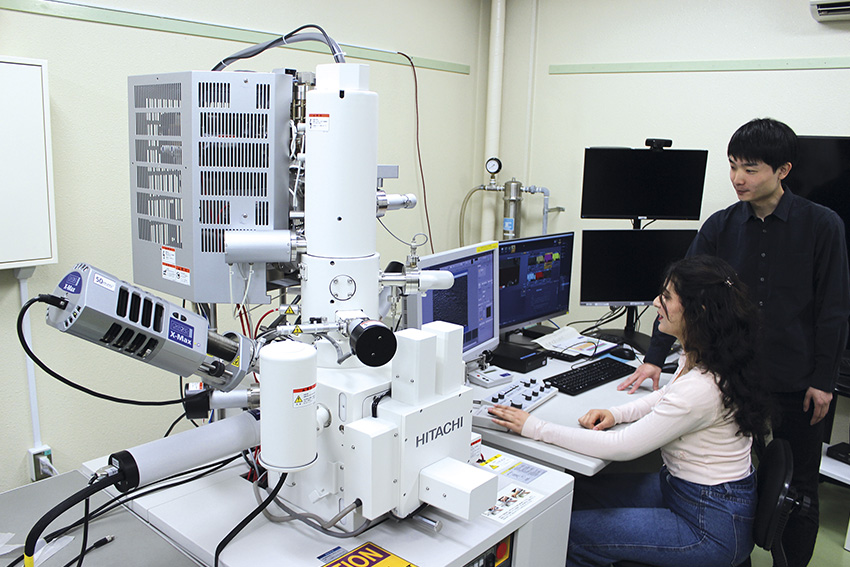
Microstructure analysis with high-resolution SEM
The conventional path to graduation is to go from high school to university before graduating. How does your program's path to graduation differ from the conventional one and why is it more efficient for securing employment after finishing university?
The first thing you need to know is that in Japan if you want to secure a job in engineering you need a master's degree. These special track students will be exposed to high-tech content earlier in the program, during the first year of the program, which is different from a conventional track program. I think this is the biggest advantage, however, they will be less exposed to non-tech components such as liberal arts, economics, and environmental issues. We offer such opportunities in our conventional master’s degree program.
OJT does offer an eye-opening experience for students, and I think that students can understand better what they need to learn more about. When they advance to the master’s degree program, they are fully motivated thanks to the OJT.
I would now like to talk more about the Foreign Student’s Twinning Program. The twinning program’s initial phase is about two and a half years, and during this phase, our faculty and foreign faculty educate the first and second-year students together. This includes Japanese language study. If students successfully complete the initial phase then they can join us for their third year, joining those that are completing a Kosen program. After the initial phase, everything is in Japanese, but these foreign students will receive support lessons in Japanese as well. They will also have the chance to go through OJT and complete a master’s degree. 65% of foreign students find a workplace after completing this program, meaning they are working as fully-fledged engineers in Japanese companies. We have collaboration agreements with many top-class universities around the world including University of Monterrey, Hanoi University of Science and Technology, Mongolian University of Science and Technology and four others.
The Kosen program has attracted attention from students in Asian countries such as Thailand, Vietnam, and Mongolia. There are two Kosen in Thailand, three Kosen Model Programs in Vietnam, and they are taking the model established in Japan. Mongolia interestingly has three already running with plans to add three more in the future. Three graduates from the first cohort of Kosen in Thailand studied at Kosen in Japan, and one of them enrolled at our university this year.
Students in the Twinning Program or graduated from Kosen, like other Japanese students, receive specialized education in their third and fourth years and those who proceed to graduate school undertake OJT. Not only do they learn problem-solving during their OJT, but they also gain an understanding of working environments in actual companies, which is different from student life.
I would like to introduce an example of a graduate from the Twinning Program who, after completing the master's program at our university, secured a job in a Japanese company. The first graduate joined a company in chemical industry and succeeded in improving efficiency through a product developed in collaboration with a faculty member from our university. Currently, this graduate is involved as a representative of the manufacturing department in new projects. Having lived in Japan for 19 years since coming to Japan, this graduate has obtained permanent residency, lives with their family in Japan, and plans to continue their children's education in Japan.
Additionally, a graduate who completed the master's program and joined an electrical machinery manufacturing company, after working abroad, returned to their home country and secured employment with a company related to Japan in a foreign country.
Thus, our graduates are not only settling in Japan but are also thriving in countries around the world based on their experience in Japan.
Furthermore, a graduate who obtained a doctoral degree from our university returned to the home country but came back to Japan to act as a bridge between the home country and Japan. This graduate supports students from the home country studying in Japan and wishes to provide the children with an education in Japan.
Lastly, a student who completed the master's program and joined a power generation company in Japan. The reason is that Japan offers more opportunities for making a global social impact than returning to the home country. This graduate has also nationalized and teaches at our university.
In this way, our international graduates are not only thriving in Japan but are also making significant contributions worldwide and fostering opportunities for the next generation to receive education in Japan.
Interestingly, a graduate of ours completed a Kosen program, came to this university, completed our program, went back to Mongolia, and became the Mongolian Minister of Education and Science. He strongly supported establishment of Mongolian Kosen Education and Mongolian-Japan Higher Engineering Education Development Project (MJEED) during his term in office.
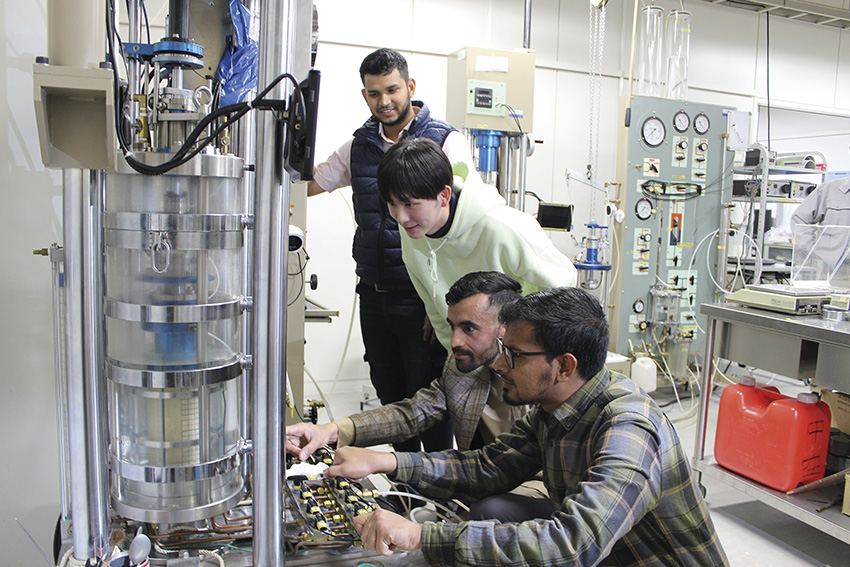
Prepared triaxial apparatus for soil testing
While Japan has now become the fourth largest economy in the world, currently it has a low amount of international students in its tertiary education system, standing at just 5%, a low figure when compared to the UK’s 20% and Australia’s 30%. What do you believe are the key steps that must be taken by Japanese universities in order to attract more foreign students and faculty members?
One thing we need to seriously tackle is communication, and we consider today a great opportunity. I fully understand the need to enhance our international reputation, so starting this year we aim to enhance international public relations. We are dedicated to increasing the international reputation of the Nagaoka University of Technology. You said that the UK has 20% foreign students, so we are looking to that figure as a benchmark. 20% translates to around 400 foreign students for our university.
Our peak was around 13% foreign students, and this figure is around double the kind of percentage you find in conventional universities here in Japan. I think this is thanks to our twinning programs and our own initiatives to globalize ourselves. Unfortunately, due to the pandemic, our percentage dropped to 11%, but now that all the restrictions are lifted we would like to bring this number up even further than ever before. We are eager to explore more initiatives and reach out even further.
One big challenge students will face is securing employment after graduating. Fortunately, over the past five years, the hiring of foreign employees has doubled. What kind of framework do you provide in order to help bridge the gap between education and employment?
Our assistance doesn’t matter whether the student is Japanese or foreign. Per each major, there are roughly speaking 6,000 job openings coming to us every year. We assess these job openings and narrow them down and target 500 companies for a job fair. Annually we open up a job fair where Japanese and international students are welcome. Also, in each major department, there is a professor who is in charge of job placement. They will listen carefully to what the students want to do and try to help those students develop their career paths. Almost 100% of foreign students wishing to stay in Japan after graduation can get hired by Japanese companies due to the amount of job offerings we are targeting.
Globalization is a key word here, and the word doesn’t just mean the acquisition of foreign students, rather, another approach is to send students overseas to study. Your approach to attracting students from abroad is one that many other universities around the world employ, so having Japanese students go abroad to study is a way of connecting international universities with Japanese ones. Are you looking to create a further memorandum of understanding (MOU) with foreign universities in order to create a student exchange? What framework do you provide to Japanese students to assist them with their desire to study overseas?
In terms of expansion, we are looking to increase the number of MOUs we have in place and create new connections with international universities. By signing MOUs with overseas institutions, we have been conducting international collaborative education programs such as twinning programs and double degree programs, and this also enables the development of unprecedented programs. Additionally, under the MOUs, there are cases where students on OJT are sent to local companies after about a month of language study at local universities, utilizing the internship systems of those universities. We also offer bidirectional short-term study abroad programs, and conduct overseas staff training to enhance globalization and specialization of our staff. Through such initiatives, we believe that globalization and diversity within the campus are being promoted. In this way, for our university, MOUs with overseas institutions are not just a tool for promoting personal exchanges and collaborative research, but are intended to promote collaborative education under the basis of true mutual understanding, where both parties are more deeply involved in each other's education. This enables the cultivation of individuals with diverse perspectives on cultures and values, capable of generating innovation, in addition to possessing advanced knowledge and skills.
In the future, we are seeking partners who will come to like Japan, and who will work together to develop engineers in countries and regions where industrial development will take place, partners who can fully utilize the characteristics of our university, and partners who can import technology in reverse.
It is important that you understand that we are quite aggressive when it comes to sending Japanese students overseas. Our second and third-year students have the opportunity to study abroad in Australia and Mexico for around 1 and a half months. Another point is OJT outside of Japan which we do in Asia and North America. Before the pandemic, we sent 72 students to receive training in 14 countries around the world. An important aspect is that not only are they receiving training, but also English language lessons.
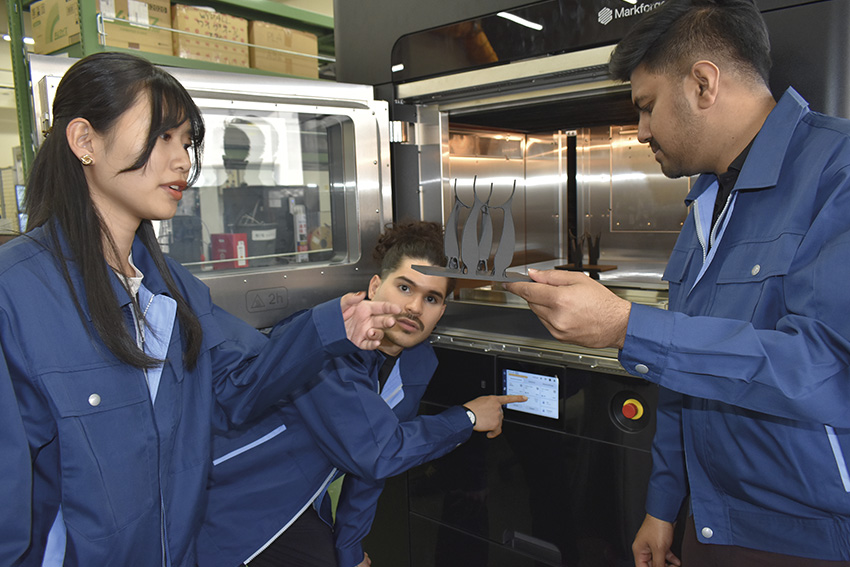
3D printing to create product prototype
These students are sent to businesses and R&D facilities in foreign countries and the total time is around 6 months. Sending 72 students overseas represents 20% of the students in the master's program who have experienced overseas OJT.
I would like to introduce a succeeding example of our Japanese graduate who went overseas OJT. He transferred from a KOSEN to our university and was sent to a university and a company for OJT in Spain. In a master’s program, he again went to Spain for one year and engaged in research and development. After completing his master’s program, he joined a company that manufactures engineering plastic products. After working overseas as an overseas representative, he became the president of the company’s overseas local subsidiary in his 30s and excelled as the person in charge of manufacturing at the local site. His overseas experience in our university not only helped him acquire language skills and expertise in his field, but also enabled him to understand culture, customs, and ways of thinking, which contributed to his career path.
The Japanese government is actually advocating sending 500,000 students overseas, a big increase on the current 200,000 that go abroad to study. Our university was selected as one of the WISE Program (Doctoral Program for World-leading Innovative & Smart Education) in 2018. The students in this program are required to take four research internship subjects and they go overseas at least twice. It is extremely important to learn to overcome setbacks rather than simply staying overseas or at a company for an extended time. Students re-learn in a subsequent stay called a “repeat practicum” to address issues after reflecting on the initial experience. 20 students in this program will be sent overseas in 2023. They were the students that were forced to stay in Japan due to the COVID-19 pandemic. Now that restrictions are lifted they flooded out of Japan.
In order to expand we need funding, but in two years we will have our 50th anniversary. Currently, we have around 20,000 alumni working in society so we will ask for donations from them.
If we change the topic to your GIGAKU approach now. GIGAKU is a science of technologies, however, there is a challenge when it comes to implementing constant feedback between theory and practice. Can you describe in more detail GIGAKU and how you integrate theory and practice into your curriculum?
I believe very firmly in the idea that people can cause disruptions through innovation. GIGAKU is quite a useful tool in causing an impact in society using innovation. Science really comes down to a core pursuit of the truth. To that end, engineering is the seed of all scientific pursuits and a medium to implement discoveries in society.
The concept of GIGAKU was first advocated by our first president, Dr. Kawakami, who also served as the president of the Tokyo Institute of Technology. GIGAKU uses the seeds of science and then applies them to the needs of society. Production design and engineering to realize solutions in the real world. GIGAKU aims for integration of the university and society through continuous feedback between theory and practice, in which theories are drawn from practice and then tested again in practice. In our university, this process is realized through OJT and academia-industrial collaboration in the graduate school. Most modern-day universities now incorporate GIGAKU elements, but only at this university is it fully implemented, incorporated, and understood.
I have a lot of passion for GIGAKU, and I suppose you could chalk that down to the fact that Dr. Kawakami’s firstborn son was my instructor when I was studying for my university degree.
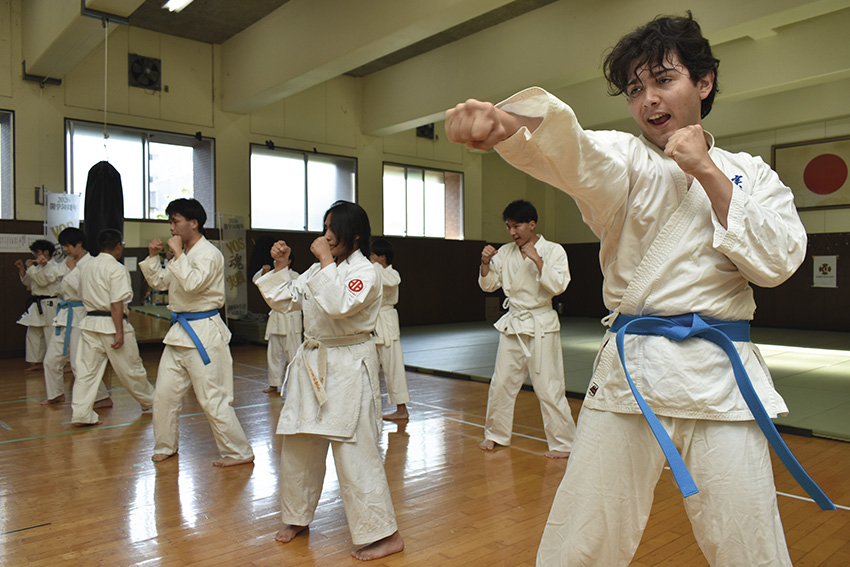
Karate practice (club activity)
Now that your university is heading towards its 50th anniversary, what dreams do you have for the university in the future?
My dream is to make this university truly borderless. By borderless, I mean not only fostering students, faculty and staff exchanges as well as educational collaborations with our overseas partners, but also eliminating the boundaries between academic disciplines.
New technologies such as AI and automated driving are being developed, but in the coming era, the social implementation of these technologies will require problem-solving not only from a technical perspective but also from philosophical and social science viewpoints. In this sense, the borderless integration of academic disciplines will become increasingly important.
By making our discipline of GIGAKU borderless, I aim to cultivate leaders who will drive the future and create a university that generates innovation
As a university, our first goal is to aim for the borderless integration of education and research. I would like to launch such communities by leveraging our network. Ideally, I’m looking for a way to promote much more open opportunities for discussion; the realization of a place where people from Japan and outside of Japan can get together and discuss a diverse set of ideas.
In order to accelerate the borderless integration of academic disciplines that we aim for, we will launch our new DX building, and I hope this will provide more opportunities for innovation in December 2024. We are also planning on launching a GX building too, which would focus on circulation of materials and energy.
To read more about The Nagaoka University of Technology, check out this article about them
0 COMMENTS